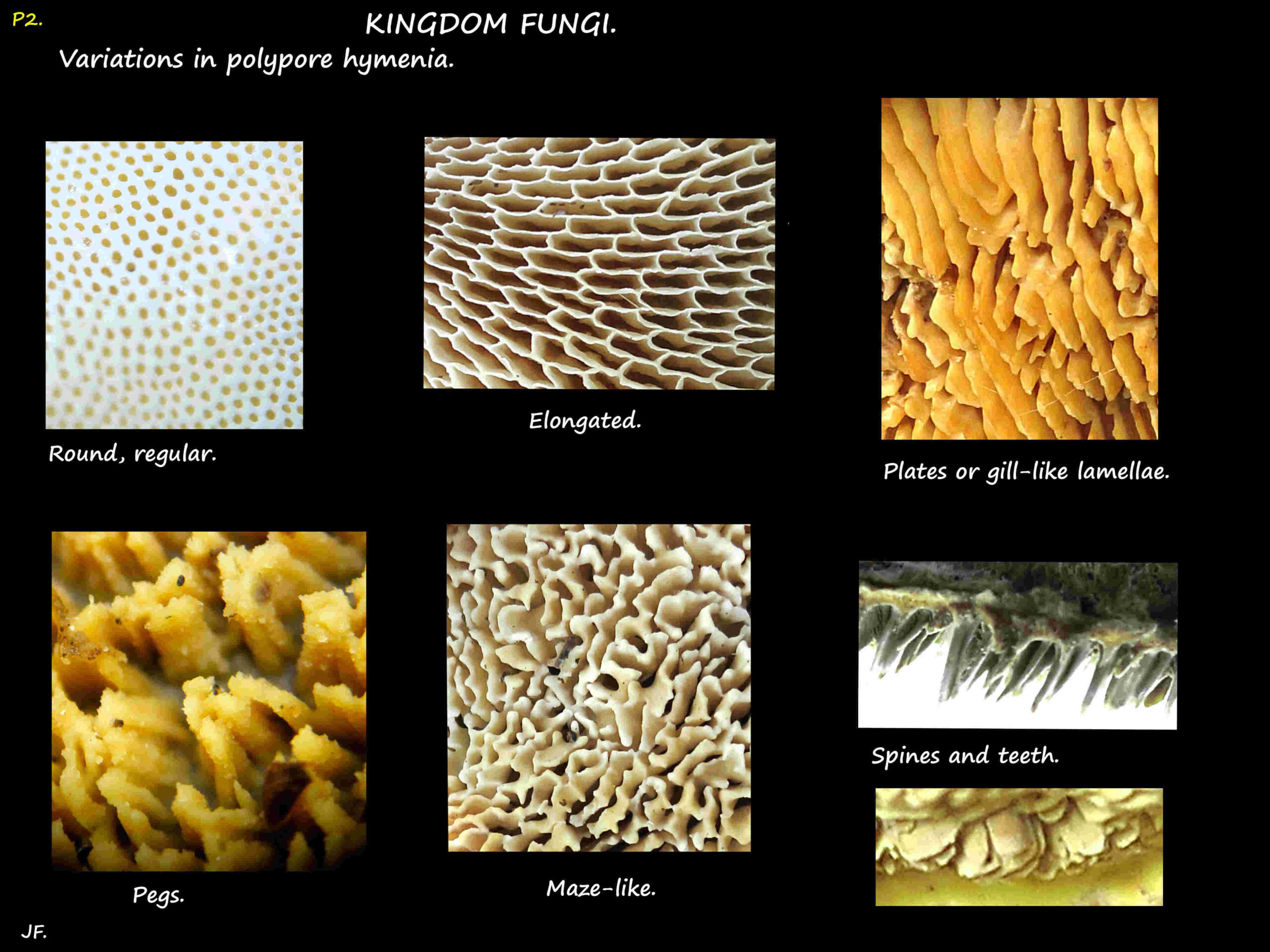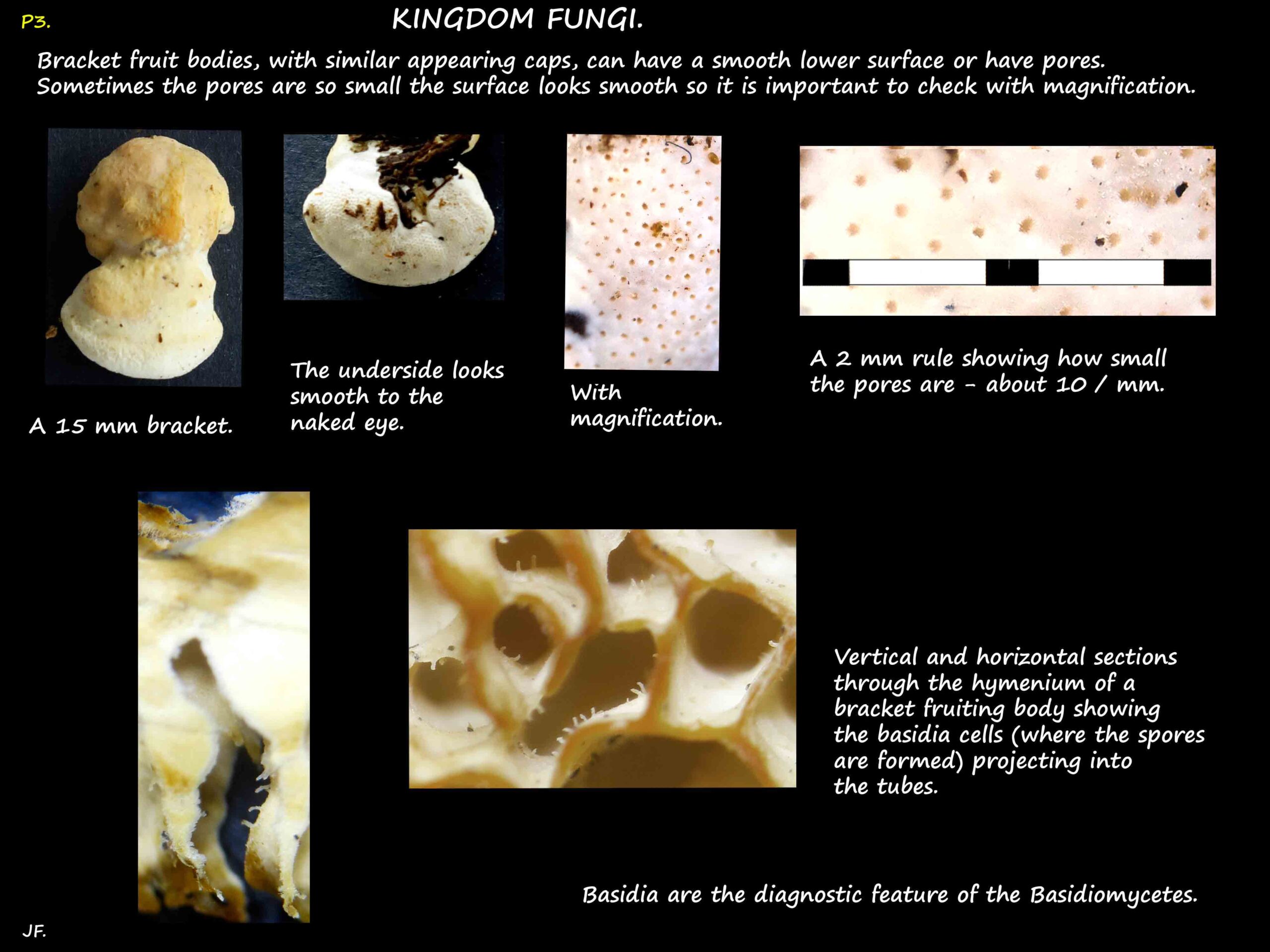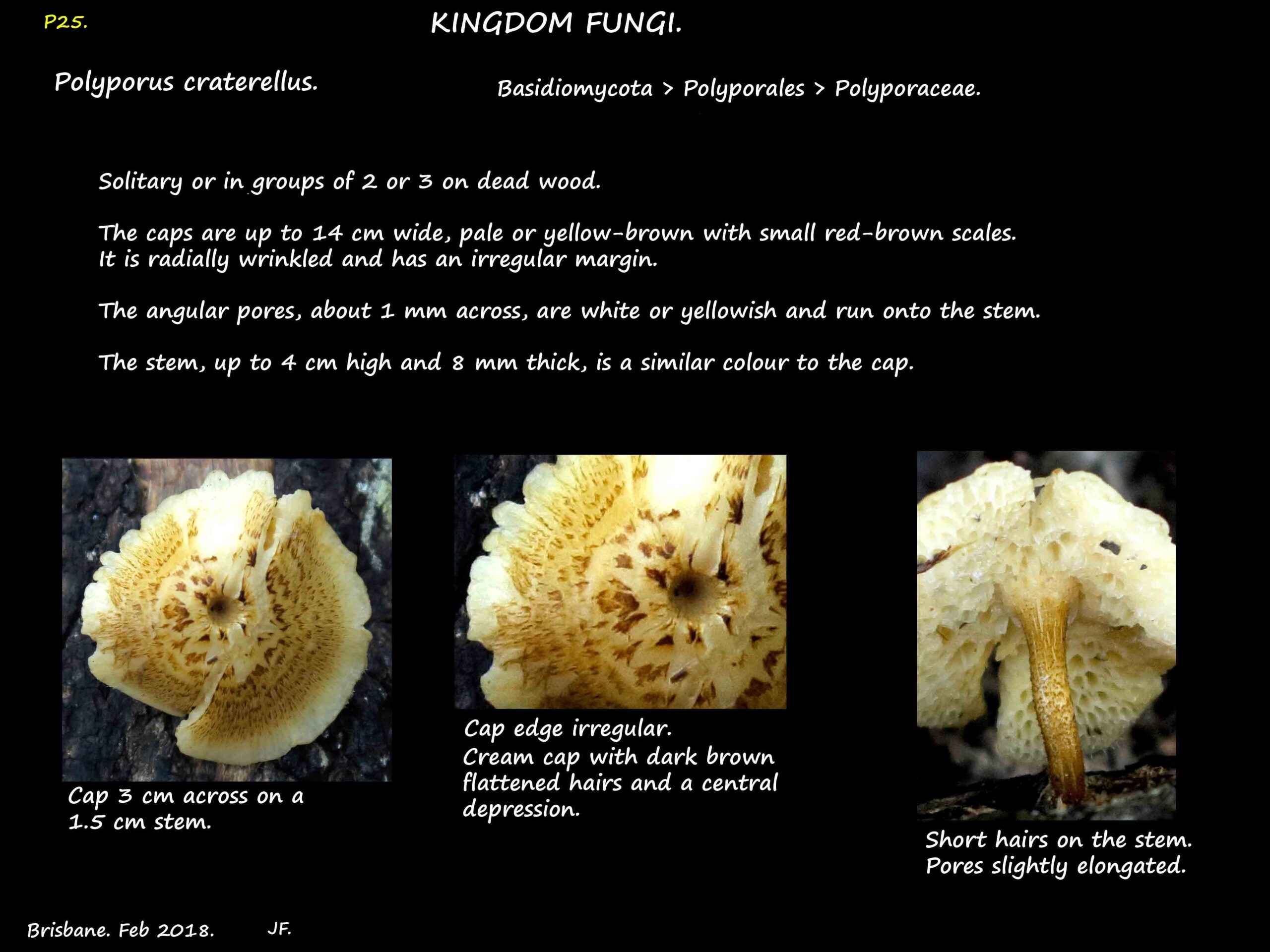Polypores – Mushrooms with pores.
These are fungi whose fruit bodies have pores instead of gills.
The vegetative mycelium remains in the substrate and it may be years before a fruit body is formed.
Most produce new fruit bodies yearly others just continue to grow for years.
They come in many shapes and sizes and are usually hard and leathery.
In all the pore layer is difficult to remove.
Most polypores have spore bearing tubes which open as pores on the underside of the fruit body.
Many have regular, round pores but others are larger and like a maze or resemble gills, teeth or spines.
The pores may be invisible to the naked eye or up to 5 mm across.
Many polypores have a greenish surfaces due to algae growing on them.
Fruit bodies cannot always be relied on for identification because of atypical forms.
Many need microscopy although other factors such as shape, substrate etc. are important.
The polypores (and corticioid) fungi are important decomposers of wood.
If seen on the ground they may be living on buried wood, on fine woody debris in the leaf litter,
they may be root rot fungi or have formed a beneficial relationship with the roots of trees.
Most are saprophytic using chemicals to degrade either the lignin or cellulose in dead wood.
Years ago all polypores were grouped in the family Polyporaceae, genus Polyporus but genetic studies have
shown that they belong in at least 12 different orders with about 170 genera and over 1000 species.
Most species are in the orders Polyporales (e.g. Fomes, Polyporus and Tramtetes) and Hymenochaetales.
Other orders are the Agaricales, Amylocorticiales, Auriculariales, Boletales, Cantharellales,
Gloeophyllales, Sebacinales, Thelephorales and Trechisporales.
Varied appearances of the spore layer.
Pores are typically round and regular over the surface of the hymenium but some are irregular
being elongated, polygonal etc.
The tube walls may break down leading to a maze-like hymenium (daedaleoid), teeth, or plates or lamellae that
look like fragmented gills.
The walls between the pores usually have a smooth rim but sometimes they are slightly incised and resemble small teeth.
J.F.




